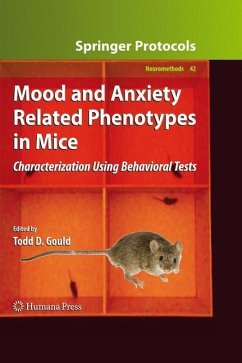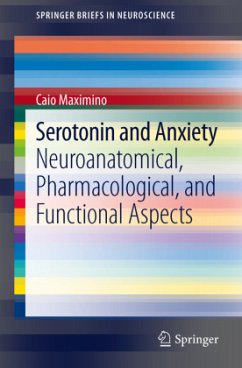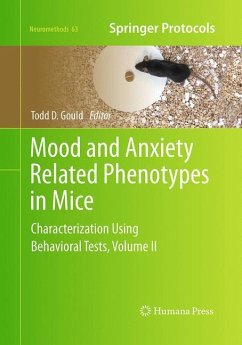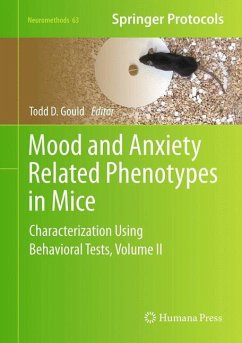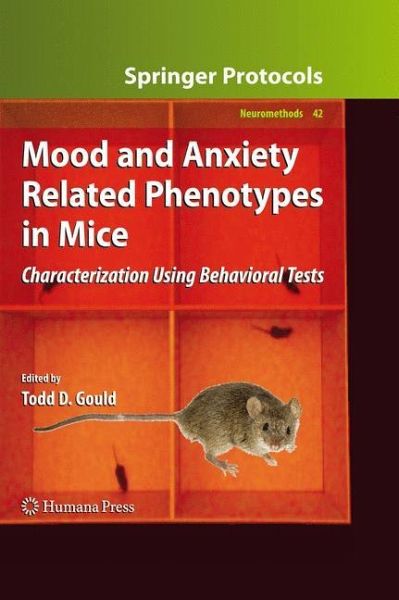
Mood and Anxiety Related Phenotypes in Mice
Characterization Using Behavioral Tests
Herausgegeben: Gould, Todd D
Versandkostenfrei!
Versandfertig in 6-10 Tagen
113,99 €
inkl. MwSt.

PAYBACK Punkte
57 °P sammeln!
Affecting approximately twenty percent of the world population, mood and anxiety disorders have been the subject of ever-increasing research. This increased research parallels a remarkable growth in the use of the laboratory mouse as a tool to understand the biological and genetic basis of mood and anxiety disorders as well as to develop improved treatments. In Mood and Anxiety Related Phenotypes in Mice: Characterization Using Behavioral Tests, world-renowned researchers provide an overview of behavioral approaches utilized in the characterization of mood and anxiety related behaviors in mice as well as commonly used behavioral assays to assess the potential antidepressant and anxiolytic efficacy of novel compounds. As a volume in the successful Neuromethods(TM) series, the chapters provide authoritative reviews including up-to-date detailed protocols of the most commonly used approaches in the field.
Mood and Anxiety Related Phenotypes in Mice: Characterization Using Behavioral Tests is an ideal resource for scientists actively pursuing or interested in establishing behavioral protocols in their laboratories, while also serving as a reference for those students, scientists, and practitioners who have an interest in better understanding the preclinical behavioral methods used in mood and anxiety research.
Mood and Anxiety Related Phenotypes in Mice: Characterization Using Behavioral Tests is an ideal resource for scientists actively pursuing or interested in establishing behavioral protocols in their laboratories, while also serving as a reference for those students, scientists, and practitioners who have an interest in better understanding the preclinical behavioral methods used in mood and anxiety research.



